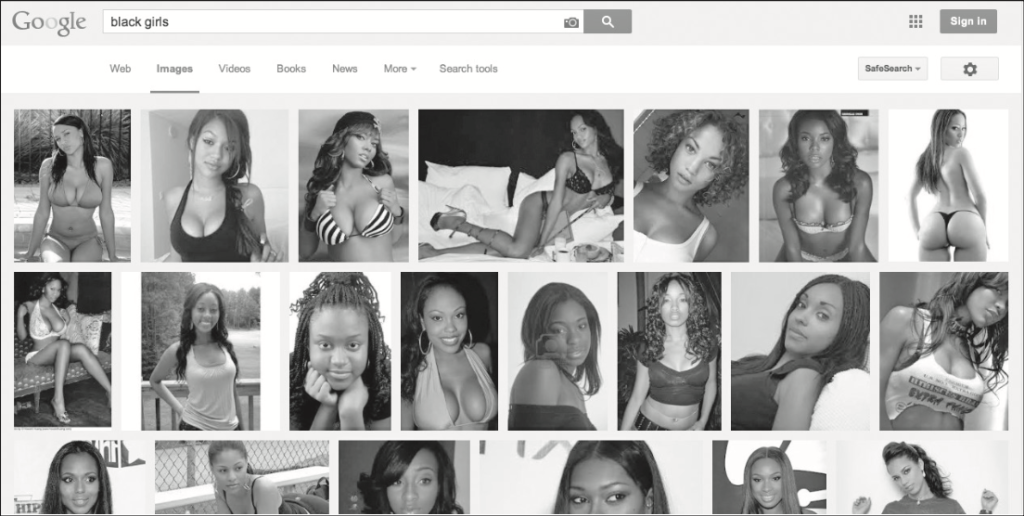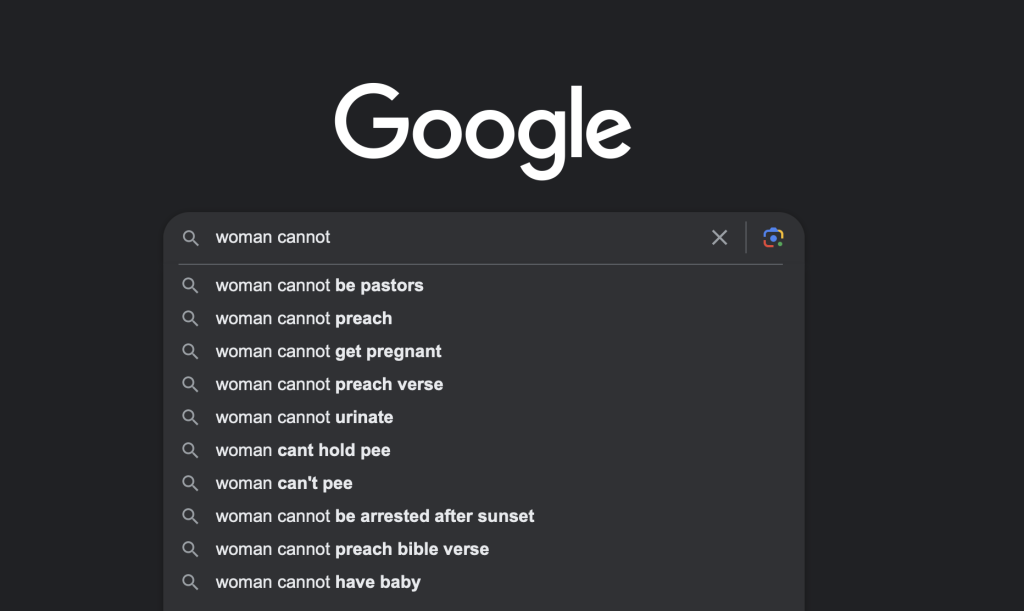The intersectionality of gender and race remains a prevalent subject in humanities and social sciences. The introduction of Web 2.0 has only intensified the discussions surrounding these sensitive and complex issues. This essay attempts to delve into the ongoing debate on whether the Internet has amplified or mitigated sexism and racial discrimination. The initial part of this discourse outlines the current trend of exacerbating racism and sexism online, illustrated by two salient examples: biased outcomes from search engines and the controversial makeup campaign on China’s high-speed rail. A detailed exploration of the underlying causes and impacts of this trend will follow. Despite the evident augmentation of racism and sexism online, the Internet also serves as a platform fostering the dissemination and awareness of gender equality. Evidently, while recognizing the potential of the Internet as a medium for social change, this essay also asserts that it currently accentuates and seeks to normalize racism and sexism.
How Search Engines Reinforces Racism and Sexism
Search engines, pivotal in information retrieval, utilize keywords to direct users to pertinent content online, serving as a gateway for user engagement with the Internet (Halavais, 2008). Despite their utility, search engines aren’t devoid of biases and stereotypes, often manifesting a propensity to commercialize and sexualize women and people of colour. In 2018, Noble highlighted an unsettling trend where a Google search for ‘black girl’ yielded results linked to pornographic websites, casting the search phrase as a commodity for exploitation. This bias isn’t exclusive to a single group; search entries like ‘Asian girl,’ ‘Latina girl,’ and ‘white girl’ unveil a spectrum of discrimination and bias (Noble, 2018).

Such trends underscore the commodification and eroticization of female identities via search engines. In the tangible world, societal norms and legal constraints often temper overt displays of discrimination and prejudice against women and diverse racial groups. However, the digital realm of the Internet provides a less restrained environment where such biases are not only evident but amplified. It is more than a mere continuation of pre-existing prejudices; it’s an algorithm-driven intensification of discrimination, rendering the Internet a potent catalyst for the propagation of racism and sexism.
How Authoritarian Official Accounts Use the Internet to Exacerbate Gender Divides

Authoritative official entities occasionally exploit the Internet to perpetuate gender disparities, a trend exemplified by a recent incident involving China Railway. The state-owned enterprise released a promotional video on various platforms, condemning the act of women applying makeup on high-speed trains as uncivilized behaviour. The video portrays a woman exaggeratingly applying makeup, inadvertently affecting a male passenger seated next to her. His silent endurance culminates in a jest, “I don’t need to put on makeup, Ms.” (Times, 2023). Through this depiction, China Railway not only misrepresents but also magnifies the act of women wearing makeup. This overemphasis translates into a form of media violence – by employing a combination of words, images, and sounds infused with underlying ideology, the media enforces oppressive narratives (Fan, 2013). The Internet, a potent vehicle for content dissemination, amplifies this oppression. Consequently, societal tolerance towards women’s use of makeup is undermined. The narrative constructed by China Railway doesn’t just erode the social acceptance of women applying makeup; it juxtaposes this act with the portrayed tolerance and humour of the male passenger. This dichotomy fosters a distorted representation of women and fuels the genesis of gender-based prejudices. Women are unjustly characterized, while men are cast in a contrasting, favourable light, exacerbating gender inequalities through digital media.
Understanding the Reasons Behind Online Sexism and Racism
Racism and sexism on the Internet, manifested in search engine phrases and content promoted by authoritative official accounts, is rooted in the biases and prejudices engendered by the homogeneous composition of the teams behind these platforms. The initial design of search engines was neutral; however, the inclusion of algorithms, which were developed to utilize user-supplied keywords to locate pertinent Internet content, incorporated biases of the developing team (Halavais, 2008). Initially, the primary objective of the World Wide Web was to facilitate automated information exchange among global scholars (Hafner, 1998). However, given the overwhelming majority of white male scholars in the twentieth century, the ‘bro-culture’ characteristic of Silicon Valley unintentionally became ingrained in the Internet’s cultural fabric (Lusoli & Turner, 2020).
‘We can see the same dynamic repeating itself now. We see a sort of “bro-culture” emerging in Silicon Valley.’
Fred Turner
In the contemporary setting, the composition of Internet development teams remains predominantly male. This gender and racial imbalance have resulted in the exclusion of minority perspectives and the perpetuation of a predominantly white male ‘bro culture.’ Consequently, Silicon Valley’s inherent inequalities and biases are mirrored and amplified on the Internet. This projection has morphed the digital space into a compact reflection of a patriarchal society where biases persist and continue to flourish.
The absence of diversity – women and minority – in search engines and the teams responsible for a significant number of the Internet’s prominent official videos inevitably results in biased search terms, leading to prejudice against these populations. Even following the incident involving a black girl, as highlighted by Noble, the focus on and sexualization of women, and the constriction of terms related to them persist.

This underscores the gender and racial bias ingrained in search engines, perpetuating a patriarchal society. Furthermore, the internet’s role as a platform for disseminating tactics that endorse gender dichotomies serves to confine and prescribe women’s behavior and ideology, contributing to their oppression.
Exploring the Impacts of Online Sexism and Racism
The rise of racism and sexism on the Internet underscores the risk of users adapting to these prejudiced norms if not properly regulated and addressed. With the increasing ubiquity of the internet and digital platforms, public reliance on these mediums grows. People often perceive search engines as neutral (Noble, 2013), and authoritative accounts receive significant attention online, leading to the rapid and wide dissemination of information, which gains users’ trust.
Drawing parallels with the example of high-speed rail incivility, the internet’s use by authoritative official accounts poses not so much as a challenge to gender equality but rather as a tool for the re-oppression of women. This exploitation seeks to manipulate the internet’s information dissemination to conform women’s images and behaviours to antiquated patriarchal norms. Furthermore, search engine algorithms inadvertently lead users to accept racism and sexism. If these issues remain unaddressed and unregulated, there is a real danger of internet users becoming acclimatized to, and accepting of, a digital era steeped in racism and sexism.
The Internet’s Potential to Foster Gender Equality
While the Internet’s rise has undeniably magnified issues of racism and sexism, it has simultaneously fuelled women’s awareness of gender equality and bolstered feminist activism. Digital platforms like Facebook and Twitter have granted women a venue for dialogue, sparking the growth of online feminism and offering a stage for them to champion their rights (Riera, 2015). The MeToo movement in 2017 serves as a testament to this, with women harnessing social media to challenge powerful men on an international scale, thereby elevating public consciousness on gender disparity and gender-based violence (Get to know us: History & inception, 2020).


Nevertheless, the digital gender divide persists—the discrepancy in internet access and utilization between men and women. This interconnectedness can, at times, accentuate societal gender disparities. Driven by societal, cultural, and economic determinants, gender inequities in digital technology access are pronounced in many developing nations (Hilbert, 2011). The digital divide, coupled with the internet’s propensity for sexism, intensifies the pervasiveness of societal sexism.
Conclusion
As seen from what was explored above, the internet remains embedded with patriarchal ideologies, as exemplified by the prevalence of racism and sexism in search engines and the exploitation of this medium by authoritative entities to manipulate women’s behavior. Such manifestations compel Internet users to inadvertently endorse racism and sexism. This acquiescence further perpetuates and amplifies these prejudiced ideologies in society, indicating an urgent need for comprehensive strategies to counteract this pervasive issue effectively.
References
Fan, H. (2013). Research on Media Violence from the Perspective of Gender. https://kns.cnki.net/KCMS/detail/detail.aspx?dbname=CDFD1214&filename=1013203485.nh
Get to know us: History & inception. me too. Movement. (2020, July 16). https://metoomvmt.org/get-to-know-us/history-inception/
Hafner, K., & Lyon, M. (1996). Where Wizards Stay up Late: The Origins of the Internet. In Simon & Schuster eBooks. http://ci.nii.ac.jp/ncid/BA29787414
Halavais, A. (2008). The Engines. In Search Engine Society (1st ed., pp. 5–31). essay, Polity Press.
Hilbert, M. (2011). Digital Gender Divide or technologically empowered women in developing countries? A typical case of lies, Damned Lies, and Statistics. Women’s Studies International Forum, 34(6), 479–489. https://doi.org/10.1016/j.wsif.2011.07.001
Lau, C. (2023, September 18). A state-owned railway in this country told women not to put on makeup on trains. here’s how they responded. CNN. https://www.cnn.com/travel/article/no-makeup-on-train-spark-online-backlash-china-intl-hnk/index.html
Lusoli, A., & Turner, F. (2020). “it’s an ongoing bromance”: Counterculture and cyberculture in Silicon Valley—an interview with Fred Turner. Journal of Management Inquiry, 30(2), 235–242. https://doi.org/10.1177/1056492620941075
Noble, S. U. (2018). A society, searching. In Algorithms of oppression: How search engines reinforce racism (pp. 15–63). essay, New York University Press.
Riera, T. (2015). Online feminisms: Feminist community building and activism in a Digital age. Scripps Senior Theses. https://scholarship.claremont.edu/cgi/viewcontent.cgi?article=1699&context=scripps_theses
Times, G. (2023). Is doing one’s make-up on high-speed trains “uncivilized behavior?” china railway’s controversy. Global Times. https://www.globaltimes.cn/page/202309/1298333.shtml

